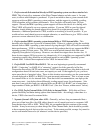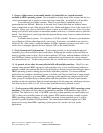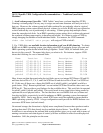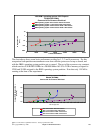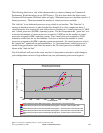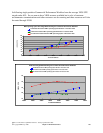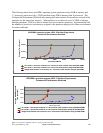3. Limited number of virtual devices per virtual SCSI adapter. You will have to configure
some number of virtual SCSI adapters so that VIOS can provide a path for IBM i operating
system to talk to VIOS as if these were really physical SCSI devices. These adapters, in turn,
implement some existing rules, so that only 16 virtual disks can be made part of a given virtual
adapter. You probably would not want to exceed this limit anyway. Note that the virtual
adapters need not relate to physical boundaries of the various underlying devices. The main
issue is to balance the load. You may be able to segregate data base and journal data at this
level. Note also that in a proper configuration, the virtual SCSI adapters will carry command
traffic only. The actual data DMA will be direct to the IBM i operating system partition.
4. VIOS and Shared Processors. On the whole, dedicated VIOS processors will work better
than shared processors, especially as the IBM i operating system partition needs three or more
CPUs itself. If you do not need shared processors for other reasons, experiment and see if
dedicated VIOS processors work better. In fact, it might be an experiment worth running even if
you have shared processors configured generally.
5. VIOS and memory. VIOS arranges for the DMA to go directly to the IBM i operating system
memory (with the help of PHYP and IBM i operating system to ensure integrity). This means
that actual data transfer will not go through VIOS. It only needs enough main storage to deal
with managing disk traffic, not the data the traffic itself consumes. Our current measurements
suggests that 1 GB of main storage is the minimum recommended. Other work suggest that
unless substantial virtual LAN is involved, between 1 GB and 2 GB tends to suffice at the 1 to 3
CPU ratio we typically measured.
6. VIOS and Queue Depth. Queue depth is a value you can change, so one can experiment to
find the best value, at least on a per IPL basis. VIOS tends the set the queue depth parameter to
smaller values. Especially if you follow our recommendations for the number of virtual disks,
you will find values like 32 to work well for the device as a starting point. If you do that, you
will also want to set the queue depth for the adapter (usually called num_cmd_elems) to its
larger value, often 512. Consult the documentation.
IBM i 6.1 Performance Capabilities Reference - January/April/October 2008
© Copyright IBM Corp. 2008 Chapter 14 DASD Performance 221








